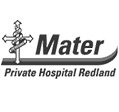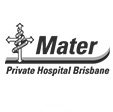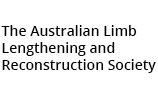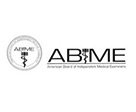Stage 1 - Pain Management and Initial Stages
Time period: Day One - 14 (sutures removed)
Aim
- Management of soft tissue surgical trauma and post-operative pain relief
- Work towards a normal gait pattern, remaining on crutches until the limp disappears. This may take up to a month to achieve.
Goals
- Healing the wounds
- Managing morbidity (i.e. pain and swelling) at the graft donor site
- Decrease joint swelling
- Achieve full extension
- Re-establish muscle control.
Potential Problems
- Infection may occur. Symptoms include a constant, severe pain, sweatiness, illness and a tense effusion. Infection will occur within 72 hours if prophylactic antibiotics were not administered at the time of the surgery. If, as is usually the case, prophylactic antibiotics were administered at the time of the surgery, the infection may come on insidiously after 5—10 days.
- There may be post-operative haemorrhage into the graft donor site. Symptoms include a red, hot and tender area. Joint motion is not usually restricted, unless pressure is placed on the graft donor site. A post-operative haemorrhage will cause pain when blood rushes to the donor site upon standing or when hanging the limb dependent.
- There may be hamstring pain or strain.
- Deep venous thrombosis may occur. Symptoms include calf, popliteal, thigh or groin pain and tenderness with associated swelling of the limb.
- Stiffness due to reflex sympathetic dystrophy or early arthrofibrosis may occur.
Treatment Guidelines
- Pain and swelling treated using ice, elevation, co-contractions and pressure pump.
- A progression from partial weight bearing to full weight bearing as pain and swelling allow.
- Aiming for full extension (but not hyperextension) by 14 days, by working through an active range of motion. Little effort will be required to achieve flexion.
- Maintenance of patella mobility through patella mobilisations, especially if there has been a patella bone-to-bone graft.
- Gait retraining with full extension at heel strike.
- Crutches will be required for about four weeks, or until the patient is walking without a limp.
Early return of co-ordinated muscle function may be developed with the use of biofeedback and selective muscle stimulation if necessary. Care should be exercised following patellar tendon grafts in stimulating the quadriceps mechanism as patella fracture has been known to occur.
Early active quadriceps strengthening is commenced as a static co-contraction with hamstrings emphasising vastus medialis obliquus control at various angles of knee flexion and progressing to weight bearing positions.
To reduce the chance of painful adhesions, gentle hamstring stretching is started immediately. A “pop” about the posteromedial thigh, indicating a hamstring tear, is common in the first 14 days, even within the first six weeks.
Early active hamstring strengthening should commence with static weight bearing co-contractions and proceed through to active free hamstring contractions by day 14. Avoid resisted hamstring strengthening for at least 4—6 weeks. The dressings will be removed and the wound checked 10-14 days after surgery.
NB: Quadriceps exercises are to be closed chain only during the first four stages.
Note - Meniscal Repair
- Partial weight bearing for six weeks
- Splint 0-90° for six weeks
- Progress as per usual following six weeks.





















